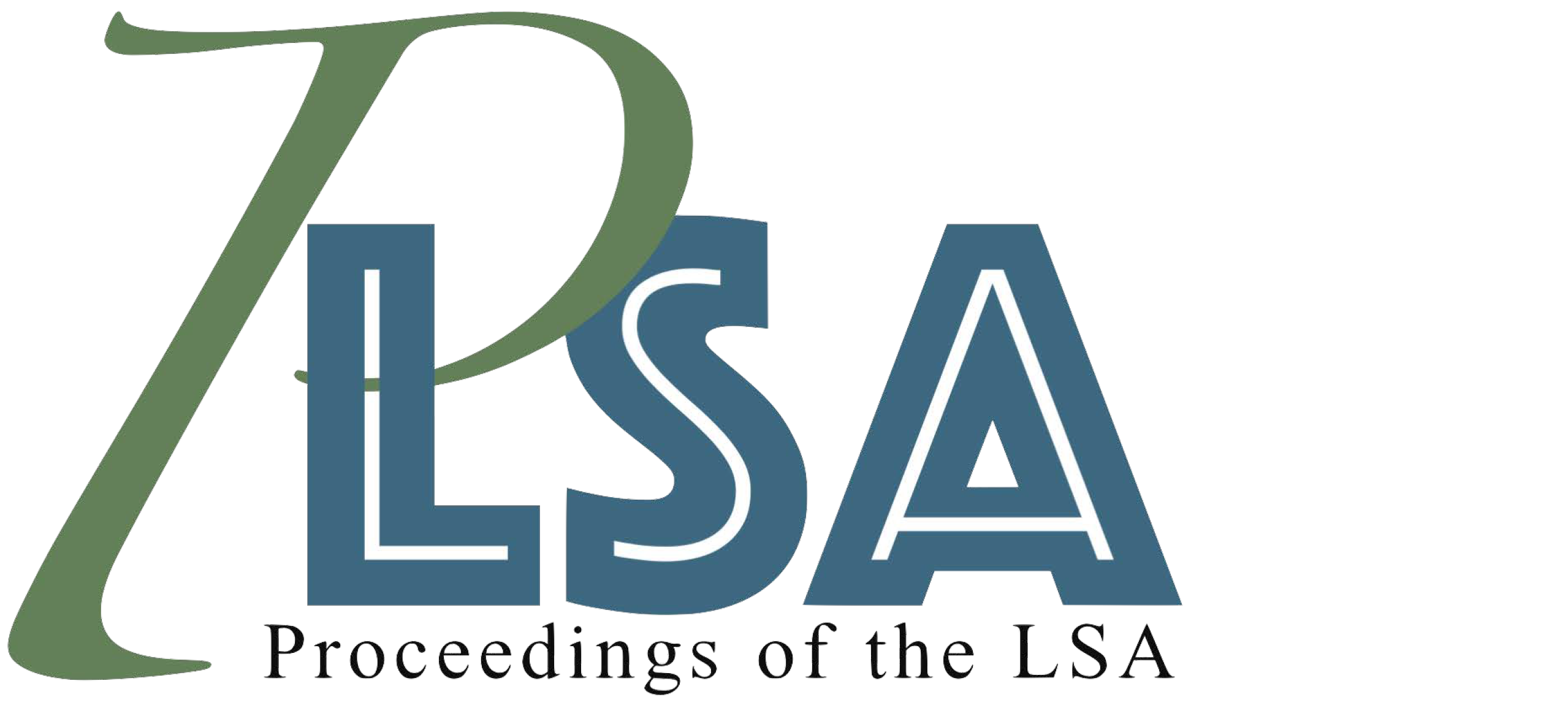Child and caregiver language in two different play contexts
DOI:
https://doi.org/10.3765/plsa.v10i1.5880Keywords:
child language, pragmatics, child-directed speechAbstract
This study examined the types of utterances that parents use when speaking to their 36-month-old children (US-based, English-speaking, N = 18) in two tasks: a semi-naturalistic free-play task and a highly structured goal-oriented task, and if utterance type was associated with child talkativeness. Transcripts of parent-child interactions in the two tasks were coded for pragmatic function. Results revealed that parents produced more directives in the structured task compared to the semi-naturalistic task. Within directives, parents produced proportionally more supportive directives that followed their child’s focus of attention in the structured task, and proportionally more intrusive directives intended to shift the child’s focus of attention in the semi-naturalistic task. The more directives parents produced, the fewer conversational turns the child took per second, although this was primarily driven by performance in the structured task. These findings highlight the importance of considering context when studying caregiver language input in interactions.
Downloads
Published
Issue
Section
License
Copyright (c) 2025 Emily Brady, Sudha Arunachalam

This work is licensed under a Creative Commons Attribution 4.0 International License.
Published by the LSA with permission of the author(s) under a CC BY 4.0 license.
